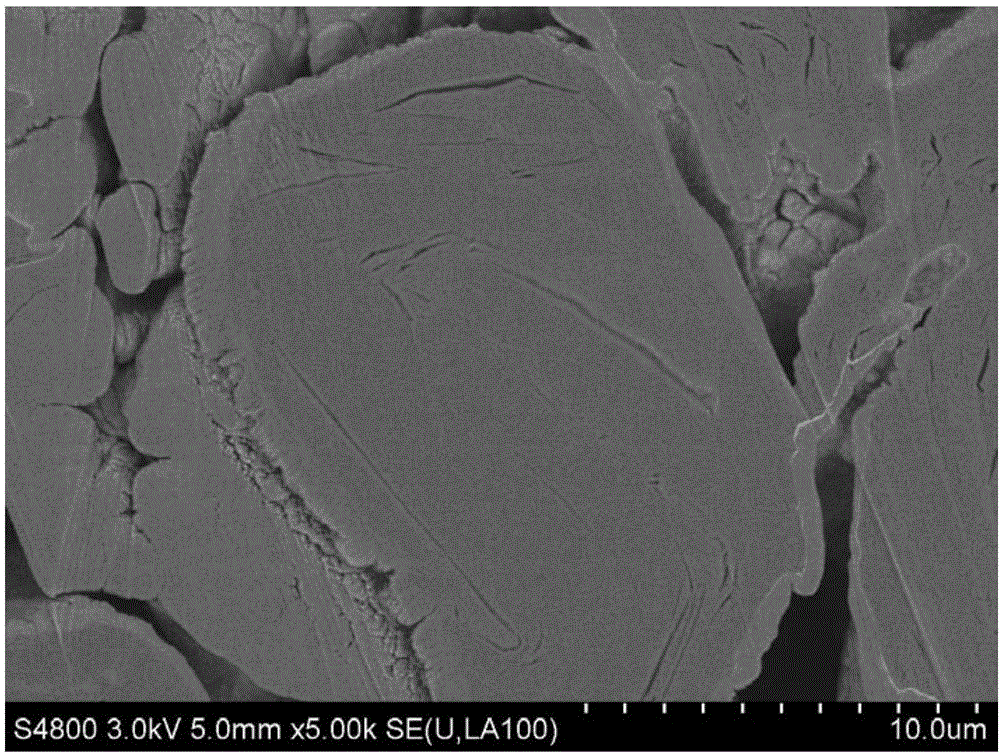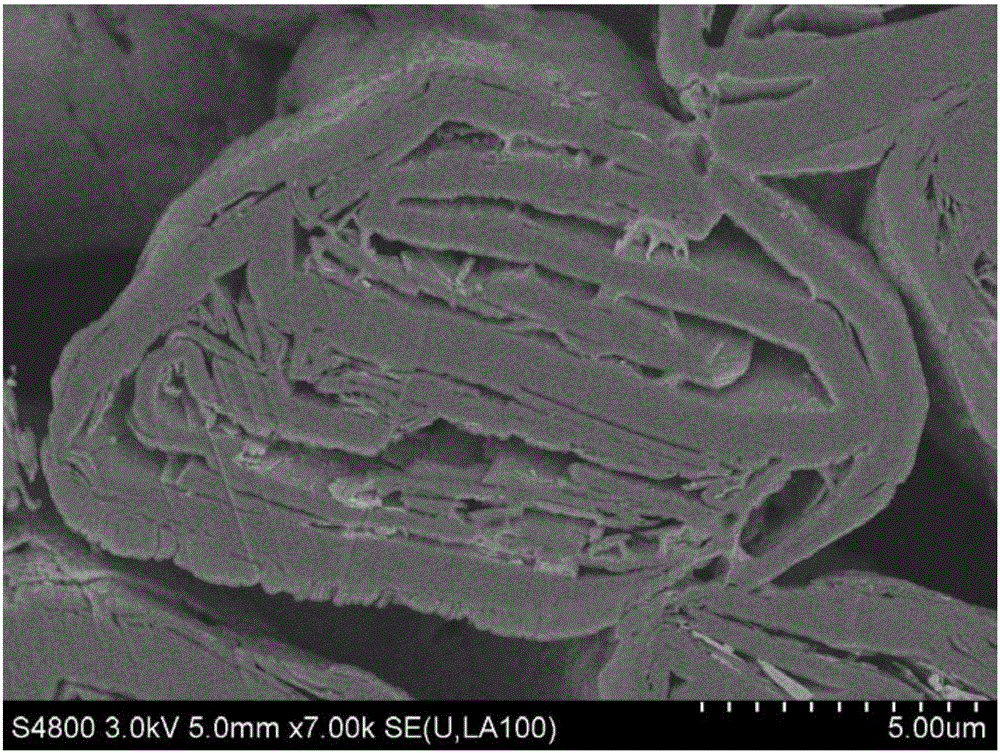Graphite negative electrode material, preparation method and lithium ion battery
A lithium-ion battery and graphite negative electrode technology, applied in battery electrodes, secondary batteries, circuits, etc., can solve the problems of cycle performance attenuation and inability to improve the structure
- Summary
- Abstract
- Description
- Claims
- Application Information
AI Technical Summary
Problems solved by technology
Method used
Image
Examples
preparation example Construction
[0028] see figure 1 , the present invention provides a method for preparing a graphite negative electrode material, the graphite negative electrode material is mainly used in lithium-ion batteries (not shown), which includes the following steps:
[0029] Step S1, mixing natural spherical graphite and pitch, mixing evenly, heating and impregnating under preset pressure, the pitch softens and flows to fill the internal pores of natural spherical graphite, and obtains an intermediate product after cooling.
[0030] Specifically, a certain amount of natural spherical graphite and powdered pitch are first weighed and mixed, and then the mixture is put into a reaction kettle for sealing and pressure-holding heating. Fill to the internal pores of natural spherical graphite, impregnate for a period of time, and cool to obtain an intermediate product.
[0031] Wherein, the average particle size range of the natural spherical graphite raw material is 3-28um.
[0032] Wherein, the asph...
Embodiment 1
[0046] Mix natural spherical graphite with an average particle size of 17.8um and powdered impregnated pitch (with quinoline insoluble content of 0.5%) at a mass ratio of 1:1, then add to the reactor, seal the reactor, and heat at 3°C Raise the temperature to 300°C per minute, keep the temperature constant for 2 hours, and keep the pressure at 0.2MPa, then take out the sample, and install the furnace for graphitization after the sample is cooled. The graphitized sample was pulverized and classified to obtain a graphite sample with an average particle size of 19.6um. The surface of the graphite sample was coated with 2% by mass of petroleum pitch by spray drying, and then carbonized at 1100 °C under a nitrogen atmosphere to obtain modified graphite.
[0047]Capacity and efficiency test: The modified graphite negative electrode material obtained in Example 1, CMC, and SBR were evenly mixed in a mass ratio of 96.5:1.5:2, then coated on the copper foil current collector, dried, an...
Embodiment 2
[0051] Mix natural spherical graphite with an average particle size of 11.5um, powdered impregnated pitch (0.5% quinoline insoluble content), and furfural accounting for 0.1% of the pitch mass, wherein the mass ratio of natural spherical graphite to pitch is 1 :0.6, then put into the reactor, seal the reactor, heat up to 250°C at 3°C / min, keep the temperature constant for 2h, keep the pressure at 0.2MPa, then take out the sample, and install the furnace for graphitization after the sample is cooled. The graphitized sample was pulverized and classified to obtain a graphite sample with an average particle size of 12.3um. The surface of the graphite sample was coated with 2% by mass coal tar pitch by mixing in a VC mixer, and then carbonized at 1000 °C under an argon atmosphere to obtain modified graphite.
PUM
| Property | Measurement | Unit |
|---|---|---|
| softening point | aaaaa | aaaaa |
| softening point | aaaaa | aaaaa |
Abstract
Description
Claims
Application Information
 Login to View More
Login to View More - R&D Engineer
- R&D Manager
- IP Professional
- Industry Leading Data Capabilities
- Powerful AI technology
- Patent DNA Extraction
Browse by: Latest US Patents, China's latest patents, Technical Efficacy Thesaurus, Application Domain, Technology Topic, Popular Technical Reports.
© 2024 PatSnap. All rights reserved.Legal|Privacy policy|Modern Slavery Act Transparency Statement|Sitemap|About US| Contact US: help@patsnap.com










